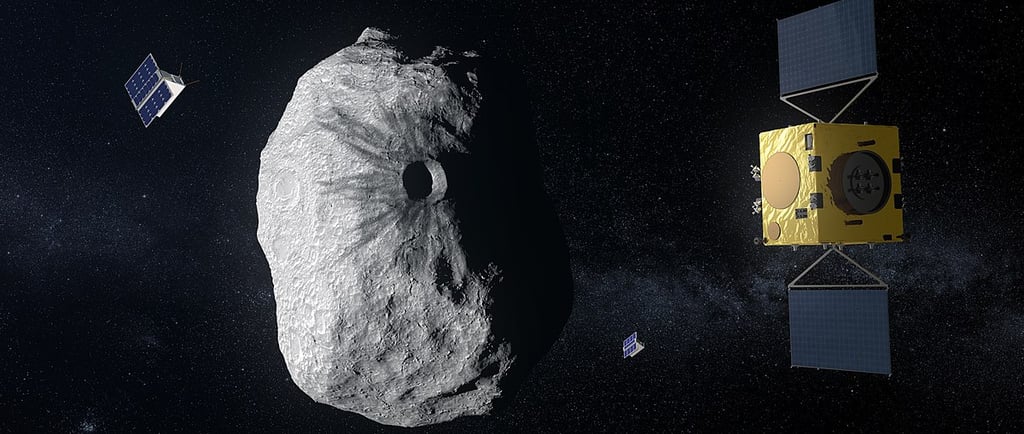The Hera Planetary Defence Mission


Introduction to the Hera Mission
The Hera mission is a remarkable achievement in planetary defense and exploration. Recently, the Hera spacecraft zoomed approximately 5,700 kilometers above the surface of Mars, an endeavor that allowed it to lock onto dozens of craters and surface features. This close encounter provided invaluable data concerning the Red Planet's geology and composition, enhancing our understanding of its complex surface.
Asteroid Dimorphos and Martian Observations
In addition to its observations of Mars, the Hera spacecraft executed a critical maneuver around the tiny asteroid Dimorphos. This maneuver exemplified Hera’s cutting-edge technology and operational precision. The spacecraft not only captured stunning images of its surroundings but also provided a new context for understanding asteroids and their roles in the evolutionary history of our solar system.
Analyzing Surface Composition with the Hyperscout H Spectrometer
A pivotal aspect of Hera’s mission is its deployment of the Hyperscout H spectrometer, which studies the surface composition of celestial bodies through the analysis of invisible wavelengths. The data returned from this sophisticated instrument allows scientists to examine the elemental and mineralogical composition of Martian features with unprecedented detail. This aspect of the mission holds promise for future explorations and potential habitation investigations on Mars.
The combination of focused observations and advanced spectral analysis positions the Hera mission as a key player in planetary science. As we continue to gather insights from the Martian surface and its accompanying moons, our understanding of the solar system will grow, potentially leading to new discoveries regarding life beyond Earth.
In conclusion, the Hera planetary defense system serves not only as a guardian against asteroid threats but also as a powerful tool for probing the mysteries of Mars and beyond. The integration of high-resolution imaging with spectroscopic analysis provides a multifaceted view of the Martian landscape, uncovering features that may have significant implications for future exploration missions.
